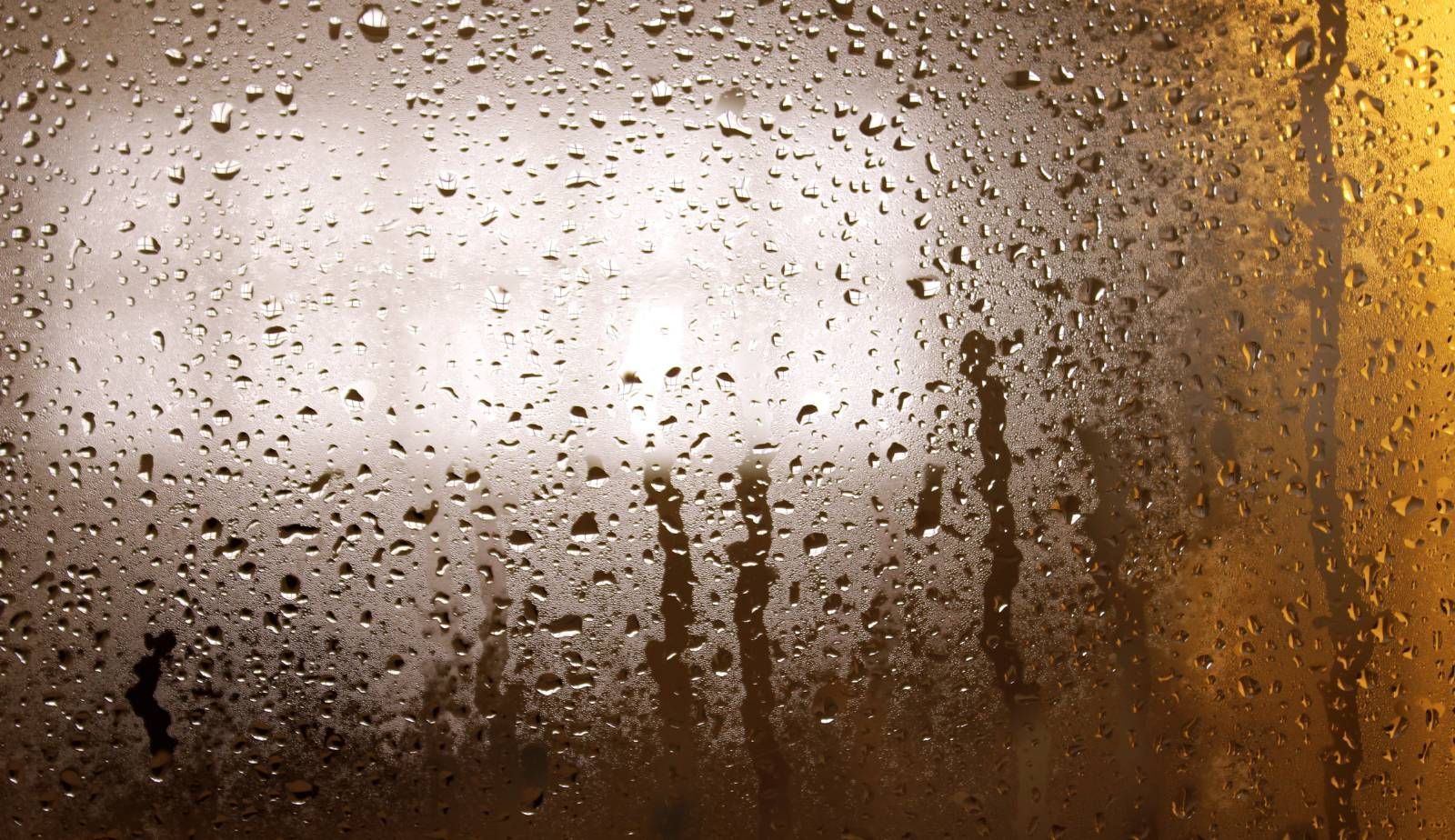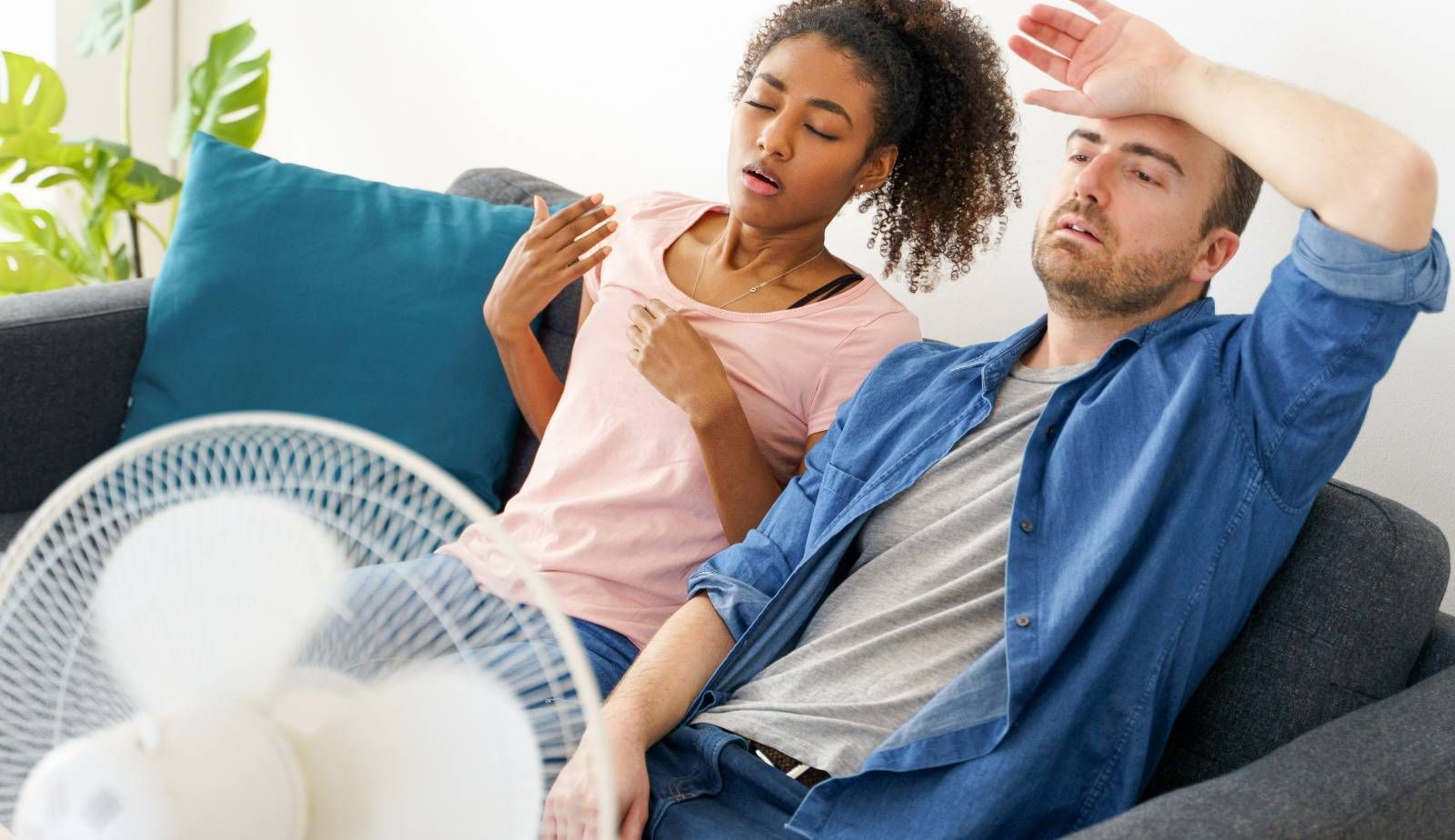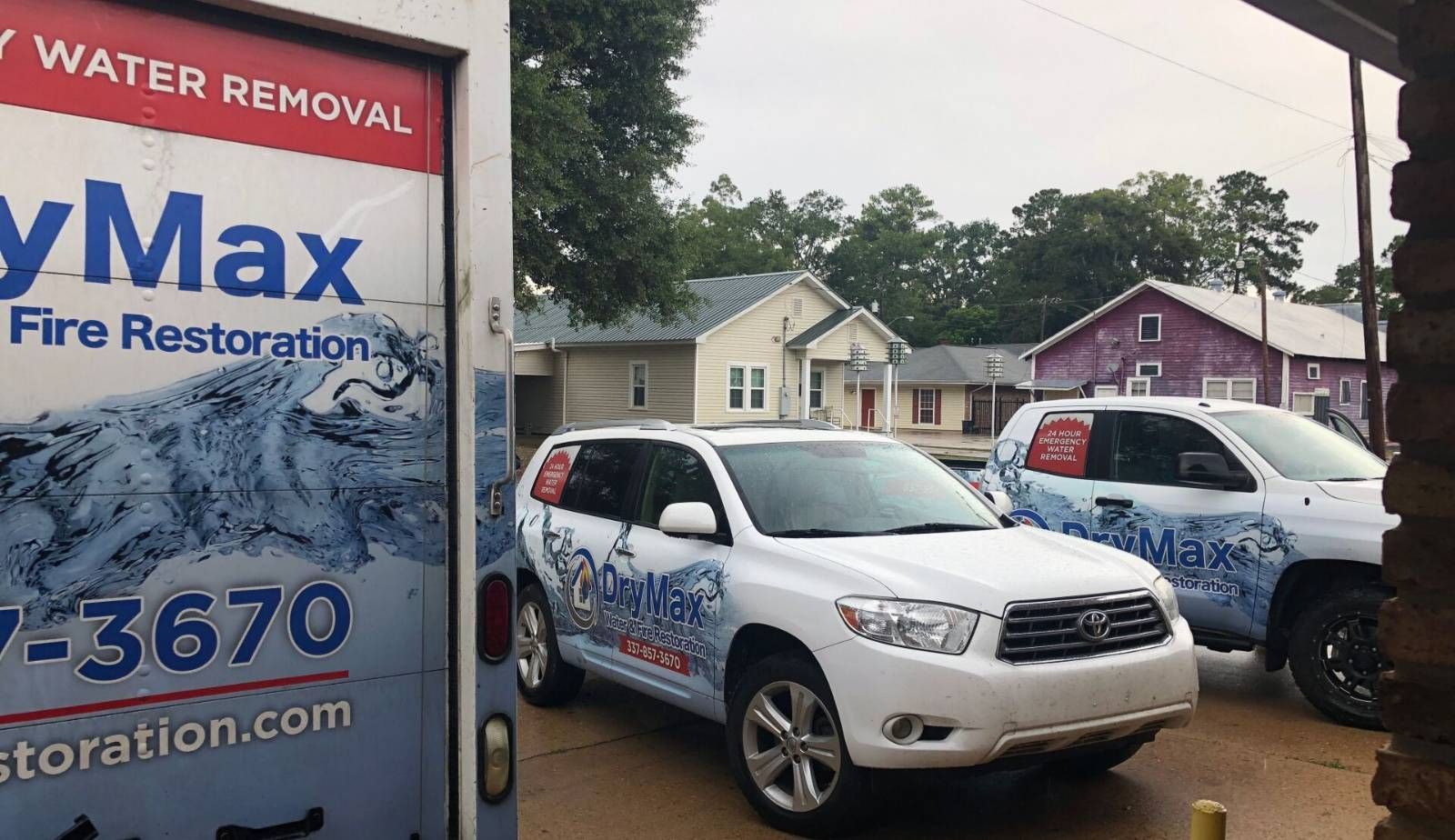Humidity + Leaks: Understanding How Louisiana’s Climate Drives Water Damage Risks
Louisiana's climate, characterized by high humidity and frequent rain, creates an environment ripe for water damage. Even small leaks can rapidly escalate into major problems due to the constant moisture in the air, leading to mold growth and structural issues. Homeowners must remain vigilant, as conditions in this region can amplify the effects of minor water intrusion.
Understanding the relationship between humidity and leaks is critical for effective home maintenance. High humidity often exceeds 70%, allowing moisture to accumulate on surfaces and infiltrate buildings. This makes regular inspections and prompt repairs essential to prevent leaks from becoming a significant concern.
Catching leaks early can save homeowners from extensive damage and costly repairs. By taking proactive measures and being aware of the signs of water intrusion, they can maintain a healthy living environment and protect their property from the detrimental effects of Louisiana's unique climate.
Understanding Louisiana’s Climate and Its Role in Water Damage
Louisiana's climate significantly influences water damage risks in residential properties. The state's high humidity levels and frequent rainfall create ideal conditions for moisture accumulation, which can lead to severe structural issues when not properly managed.
Unique Challenges of High Humidity and Frequent Rainfall
High humidity is a defining characteristic of Louisiana's subtropical climate. This moisture-laden air can often hover at 60% or higher, creating an environment where water damage becomes a pressing concern.
Frequent rainfall compounds this issue. Heavy downpours can overwhelm drainage systems, leading to localized flooding and pooling water. This additional water increases the chances of leaks developing in roofs, basements, and plumbing systems.
Small leaks that may seem inconsequential can rapidly escalate. When combined with persistent humidity, they create an environment where mold thrives, exacerbating both health risks and damage to property.
Impact of Subtropical Climate on Moisture Control
Louisiana's subtropical climate results in a long growing season, which is beneficial for agriculture but detrimental in terms of moisture control. Warm temperatures combined with high humidity levels hinder effective drying of surfaces and materials after rainfall or spills.
Building materials such as wood and drywall absorb moisture easily. Over time, this leads to deterioration and increases the risk of mold growth. Conventional methods for controlling moisture may not suffice in an environment where excessive humidity is the norm.
Maintenance strategies must be proactive. Using dehumidifiers, ensuring proper ventilation, and regularly inspecting homes for vulnerabilities can significantly mitigate moisture-related issues.
How Excess Moisture Sets Louisiana Apart
In Louisiana, excess moisture is not just a seasonal inconvenience; it is a year-round challenge. The risk of water damage increases substantially due to the combination of high humidity and the state's geographical features, like bayous and wetlands.
These factors create a unique water cycle, where humidity levels often remain elevated even when it’s not raining. As a result, water damage can occur not just from direct leaks or flooding but also from the continual exposure to moist air.
Homeowners need to remain vigilant. Regular monitoring of areas prone to dampness, along with prompt repairs, can help prevent small issues from escalating into significant water damage problems.
How Humidity Accelerates Water Damage from Leaks
In areas characterized by high humidity, even minor leaks can lead to significant water damage. The constant presence of moisture in the air exacerbates the effects of these leaks, leading to greater structural challenges over time.
Escalation of Damage in Constant Moisture Conditions
High humidity creates an environment where water damage can escalate rapidly. When a leak occurs, the excess moisture already present in the air prevents effective drying. This prolonged exposure can lead to serious issues such as mold growth, characterized by visible water stains and potential health risks.
As the humidity remains elevated, the risk of structural damage increases. Wood and other materials absorb moisture, resulting in warping and weakening. Over time, this deterioration can compromise the integrity of the building.
Compounding Effects of Small Leaks
Small leaks may initially seem insignificant, but they can have compounding effects under high humidity. The moisture introduced by these leaks can quickly raise indoor humidity levels, creating a cycle of persistent dampness. For example, a leaky faucet or a small crack in a pipe can release water into areas that remain moist due to surrounding humidity.
As moisture builds up, mold and mildew thrive in these conditions. These growths not only damage surfaces but also contribute to poor indoor air quality. Detecting leaks promptly becomes crucial to mitigate these compounded effects before they escalate into larger problems.
Persistent Moisture and Material Deterioration
The interaction between humidity and leaks leads to persistent moisture problems that affect various building materials. For instance, drywall and insulation readily absorb excess moisture. This not only leads to visible damage like water stains but can also create hidden risks behind walls.
Constant moisture leads to deterioration that may require extensive repairs or replacements. Replacing rotted wood beams or damaged drywall can be costly and time-consuming. Regular inspections and maintenance are essential to identify and address leaks early, helping to preserve the structural integrity of the home. By managing humidity levels, property owners can significantly reduce the risk of severe water damage.

Early Signs and Hidden Risks of Leaks in Humid Environments
Identifying early signs of leaks in humid climates is crucial for homeowners. Recognizing water stains, understanding hidden leaks, and being aware of subtle warning signs of excess moisture can help mitigate damage before it escalates.
Recognizing Water Stains and Discoloration
Water stains are often the first visible indication of a leak. These stains can appear as yellow or brown spots on ceilings or walls. Homeowners should be vigilant, as even small discolorations can signal significant underlying issues.
Regular inspections of interior surfaces are essential. Frequent checks can help in spotting new stains, which could indicate an active leak. Homeowners must also be aware that fresh stains are often more serious than older, dried ones, as they can suggest ongoing moisture problems.
Additionally, any paint flaking or bubbling can signify trapped moisture beneath the surface. Addressing these issues promptly can prevent mold growth and water damage.
Detecting Hidden Leaks Behind Walls and Ceilings
Hidden leaks can significantly threaten a home's structure. They often hide behind walls and ceilings, making detection challenging. Homeowners should consider using moisture meters as a tool to identify areas with elevated moisture levels.
These devices can help pinpoint high-risk areas that may not show visible signs of damage. Pay attention to areas around plumbing fixtures, often common sources of hidden leaks.
Regular inspections behind appliances, under sinks, and in basements should be part of routine home maintenance. Catching leaks in their early stages can save homeowners from costly repairs later.
Subtle Warning Signs of Excess Moisture
Excess moisture can manifest in less obvious ways. A musty odor in a home often indicates hidden humidity issues or mold growth. Homeowners may also notice an increase in their energy bills, which can result from an HVAC system working harder to maintain comfort levels in a humid environment.
Unexplained increases in water bills can also be an indicator of a hidden leak. Small, constant drips can add up, leading to more significant financial implications over time.
Regular use of moisture detection devices, like hygrometers, can help monitor indoor humidity levels. Maintaining humidity levels below 60% is key to avoiding potential water damage and ensuring a healthy living environment.
Mold Growth: A Major Consequence of Humidity and Leaks
Excess moisture from humidity and leaks significantly contributes to mold growth, creating serious issues for homeowners in Louisiana. Understanding the specific vulnerabilities of these homes and the health risks associated with mold exposure is crucial for effective prevention.
Why Louisiana Homes Are Especially Vulnerable
Louisiana's humid climate creates an ideal environment for mold growth. With high levels of humidity frequently exceeding 80%, moisture-laden air penetrates homes and increases dampness.
Many homes in this region have poor ventilation, making it difficult for moisture to escape. Even minor leaks, such as those from plumbing or roofing, can lead to significant mold issues.
Building materials like drywall and wood can absorb moisture, providing a perfect substrate for mold spores to thrive. Effective mold prevention in this context requires consistent monitoring and maintenance of household humidity levels.
Health Risks of Mold Exposure
Exposure to mold can pose serious health risks, especially for vulnerable populations such as children, the elderly, and those with respiratory conditions. Mold spores can trigger allergic reactions, asthma attacks, and other respiratory illnesses.
Symptoms of mold exposure may include coughing, sneezing, skin irritations, and chronic respiratory issues. In some cases, exposure can lead to more severe health concerns such as infections or toxic reactions.
Implementing antimicrobial treatments and effective mold prevention strategies is essential to safeguard health. Identifying and addressing leaks promptly can help mitigate mold growth and its associated risks.
Promoting Mold Growth Through Persistent Dampness
Persistent dampness is a primary contributor to mold growth. Louisiana's climate, which fosters humidity, combined with untreated leaks, allows mold to flourish.
Areas such as basements, kitchens, and bathrooms are particularly susceptible to excess moisture. If not managed, even small leaks can lead to significant mold infestations.
Homeowners should regularly inspect their properties for signs of moisture problems. Using dehumidifiers and ensuring proper ventilation can significantly reduce indoor humidity levels. Implementing regular maintenance checks can also help prevent leaks before they escalate into larger issues.

Methods for Detecting and Addressing Moisture Problems
Effectively managing moisture problems is crucial for homeowners in Louisiana, where humidity levels can exacerbate even minor leaks. Proactive approaches can help in identifying hidden issues before they escalate.
Using Moisture Meters and Detection Tools
Moisture meters are invaluable tools for assessing moisture levels in various building materials. These devices can help identify areas with excessive humidity or water intrusion.
Types of moisture meters include:
- Pin-type meters: These use probes to measure moisture content directly.
- Pinless meters: These utilize electromagnetic waves to scan for moisture without damaging surfaces.
Regular use of these tools allows for early detection of moisture issues, enabling timely intervention. For instance, when it detects levels above 20%, immediate action should be considered to prevent damage.
Air Quality Monitoring and Regular Inspections
Monitoring air quality is essential for spotting moisture issues. Humidity levels inside a home should ideally be between 30% and 50%.
Regular inspections can catch hidden leaks, particularly around high-risk areas such as:
- Plumbing fixtures
- Roof valleys
- Basements and crawl spaces
Homeowners should conduct visual checks for water stains or mold growth. Additionally, using air quality monitors can provide real-time data, alerting them when humidity rises above comfortable levels.
Pinpointing Hard-to-Find Leaks
Hidden leaks can be particularly problematic due to their subtle nature. They often occur behind walls or under floors.
Detecting these leaks may require advanced techniques, such as:
- Thermal imaging cameras: These devices can identify temperature differences caused by moisture.
- Acoustic leak detection: This method involves listening for the sound of water escaping pipes.
Maintaining vigilance with these detection methods allows homeowners to resolve issues before they lead to significant repairs. Addressing leaks promptly not only saves money but also protects against mold and structural damage.
Professional Restoration Strategies in Louisiana’s Climate
In Louisiana's humid environment, effective strategies for water restoration are crucial. Addressing water damage promptly can prevent escalation and mitigate structural problems. Key techniques include efficient water extraction, the right choice of drying equipment, and targeted remediation methods.
Effective Water Extraction and Drying
Immediate water extraction is essential for minimizing damage. Professionals begin by using powerful pumps to remove standing water. They assess the extent of the leak to determine the appropriate response.
Once the water is extracted, drying follows. Advanced techniques may involve thermal imaging to detect hidden moisture that could lead to mold growth. Utilizing industrial-grade dehumidifiers reduces humidity levels significantly. An effective drying process usually takes between 3 to 7 days, depending on the extent of the damage.
Choosing the Right Air Movers and Dehumidifiers
Selecting the proper air movers greatly influences the drying process. High-velocity fans are ideal for circulating air, which speeds up evaporation. They also help in targeting moisture in hard-to-reach areas.
In tandem, dehumidifiers are critical to achieving optimal humidity levels. Low-grain refrigerant (LGR) dehumidifiers are particularly effective in high-humidity settings like Louisiana. These units efficiently extract moisture from the air, helping to prevent mold growth.
The combination of air movers and dehumidifiers creates a balanced environment necessary for effective drying. This synergy significantly reduces the risk of structural damage.
Structural Repairs and Remediation Methods
After drying, structural repairs become necessary to restore the property. This may involve replacing drywall, insulation, or flooring that sustained water damage. Professionals may conduct mold remediation, especially in areas where moisture was prevalent.
Antimicrobial treatments are often applied during the remediation process. These treatments combat mold and inhibit microbial growth in affected areas. Ensuring that building materials are suitable for the humid climate—such as mold-resistant drywall—can further enhance long-term durability.
By focusing on these targeted strategies, restoration specialists effectively address the specific challenges posed by Louisiana's unique climate.
Preventative Measures and Maintenance for Homeowners
Homeowners in humid climates like Louisiana must be proactive in preventing water damage. Effective strategies include routine inspections, upgrading materials, and incorporating design features that control humidity. These measures can significantly reduce the risk of leaks and mold growth.
Routine Inspections and Maintenance Tips
Regular inspections are essential for identifying potential leak sources. Homeowners should check plumbing fixtures, roofs, and windows for signs of wear or damage.
Key tasks include:
- Inspecting gutters: Clean and clear debris regularly to prevent overflow.
- Checking for leaks: Use moisture meters to detect hidden leaks behind walls or under sinks.
- Monitoring humidity levels: Aim for indoor humidity below 60% to deter mold growth.
Implementing a quarterly inspection schedule is advisable. This proactive approach can help catch small issues before they escalate into costly repairs.
Upgrading Building Materials for Moisture Resistance
Choosing the right building materials can enhance a home's resilience against moisture. Homeowners may consider:
- Water-resistant paints: These can protect walls from moisture and mold.
- Vapor barriers: Installing these in basements and crawl spaces helps block moisture from the ground.
Additionally, opting for materials like fiber-cement siding or treated wood can reduce vulnerability to humidity. Regular maintenance of these materials ensures their effectiveness and longevity.
Design Features for Humidity Control
Designing a home with humidity control in mind can prevent water-related issues. Key features include:
- Proper ventilation: Install exhaust fans in kitchens and bathrooms to reduce moisture buildup.
- Dehumidifiers: Utilizing these devices can significantly lower humidity levels in particularly damp areas.
Incorporating these strategies helps create a more comfortable living environment. Adequate ventilation and humidity control systems are crucial in combating the negative effects of Louisiana’s climate on homes.

Frequently Asked Questions
Homeowners in Louisiana often face unique challenges due to the state's high humidity levels and the risk of water damage. Understanding the specific issues related to this environment can help in taking proactive measures to protect homes.
What are the recommended humidity levels for preventing water damage in Louisiana homes?
Maintaining indoor humidity levels between 30% and 50% is recommended to prevent water damage. Levels higher than this can lead to condensation and create an environment conducive to mold growth.
What are the early signs of water damage due to high humidity that homeowners should look for?
Homeowners should be vigilant for signs such as peeling paint, warped wood, or discoloration on walls and ceilings. Additionally, a musty odor can indicate mold growth tied to high humidity.
How can constant high humidity in Louisiana contribute to the deterioration of building materials?
High humidity can cause wooden structures to swell, warp, or decay. Once materials absorb excess moisture, they become less stable, leading to structural issues over time.
What preventative measures can be taken to protect Louisiana homes from humidity-related water damage?
Installing dehumidifiers can help control indoor humidity levels. Regular maintenance of gutters and downspouts will also prevent water accumulation around the foundation.
In what ways can small water leaks escalate into larger issues in a high-humidity environment?
Small leaks can be easily overlooked, allowing moisture to accumulate unnoticed. Over time, this can lead to mold growth and significant structural damage, requiring costly repairs.
What steps should Louisiana residents take to address water leaks promptly to mitigate damage?
Residents should regularly inspect plumbing fixtures and roofs for signs of leaks. Immediate repairs and using moisture-absorbing materials can prevent water from spreading and causing further damage.
You might also like
DryMax Restoration Blogs




